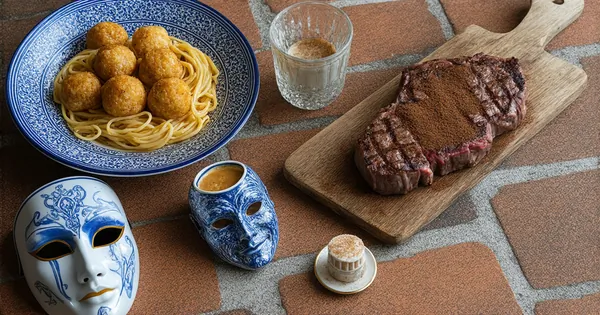
Italy
Experience Italy's renowned culinary traditions from authentic street foods to regional specialties while navigating food safety considerations in this Mediterranean gastronomic paradise.
Explore Europe's diverse culinary landscape, from Italian trattorias to Spanish tapas bars and French bistros. Discover essential safety practices while navigating seasonal markets, street food festivals, and authentic regional specialties across this gastronomic paradise.
Information presented here is compiled from various sources for general guidance only. Details may change and vary by location. We assume no liability for any damages resulting from reliance on this information. Always verify current information with official local sources before making travel decisions.
In Mediterranean countries like Italy, Spain, and Greece, seafood should be properly chilled; in Northern European countries, hot dishes should be served steaming at temperatures above 63°C/145°F
Quality vendors in Paris markets, Barcelona's La Boqueria, or Vienna's Naschmarkt display fresh ingredients properly: meats chilled, produce unspoiled, and dairy products kept cool
Reputable vendors across Europe use separate cutting boards and utensils for raw meats and ready-to-eat foods; particularly important at German Christmas markets, Italian street food stalls, and UK food festivals
Busy establishments with local customers indicate reliable quality in places like Rome's Testaccio Market, Amsterdam's Albert Cuyp Market, or Lisbon's Time Out Market
European food vendors often perfect specific regional specialties—a Portuguese pastelaria focusing solely on pastéis de nata, a German bratwurst stand with generations of experience, or a Spanish tapas bar known for one signature dish
Most European countries have strict food safety requirements—look for displayed certificates in the UK and Germany, hygiene ratings in France, or QR codes in Nordic countries linking to inspection records
Southern European countries like Italy, Spain, and Greece serve more raw or cured items (carpaccio, ceviche, cured hams) requiring careful vendor selection, while Northern European countries typically serve more thoroughly cooked foods
Coastal cities like Barcelona, Marseille, and Naples offer fresher seafood than inland cities like Madrid, Paris, or Munich where preserved or transported seafood requires more scrutiny
Major European capitals enforce stricter regulations, while rural areas and small villages may follow traditional preservation methods (fermenting, curing, smoking) that rely on time-tested techniques rather than modern refrigeration
Food safety information is provided for educational purposes only and does not guarantee protection from foodborne illness. Individual establishments' safety standards may vary. Travelers should exercise personal judgment when making food choices and consult medical professionals for specific dietary concerns.
European food culture represents an incredibly diverse tapestry of regional traditions shaped by geography, climate, and centuries of cultural exchange. Mediterranean cuisines from Italy, Spain, Greece, and southern France emphasize olive oil, fresh vegetables, seafood, and minimal processing. Central European traditions in Germany, Austria, and Poland feature hearty meat dishes, preserved foods, and rich baking traditions. Nordic cuisines from Sweden, Denmark, and Finland highlight preservation techniques like smoking, pickling, and fermenting. The British Isles blend traditional fare with colonial influences and modern innovations. Each European country maintains distinct culinary identities while sharing common values of seasonality, local sourcing, and meal-centered social gatherings. Street food cultures vary dramatically—from Spanish tapas and Italian street markets to German Christmas markets, British food festivals, and Eastern European food halls.
Ingredient information and allergen details are based on common regional practices and may vary significantly between establishments. Those with food allergies, sensitivities, or dietary restrictions should always verify ingredients directly with food vendors or restaurants.
Images displayed are representative of typical dishes and locations but may not depict the exact appearance of food items or establishments you will encounter. Visual presentation varies widely across the region.
This guide presents information from multiple sources and focuses on general patterns rather than specific establishments. While we strive for accuracy, information should be considered a starting point for your own research rather than definitive advice.